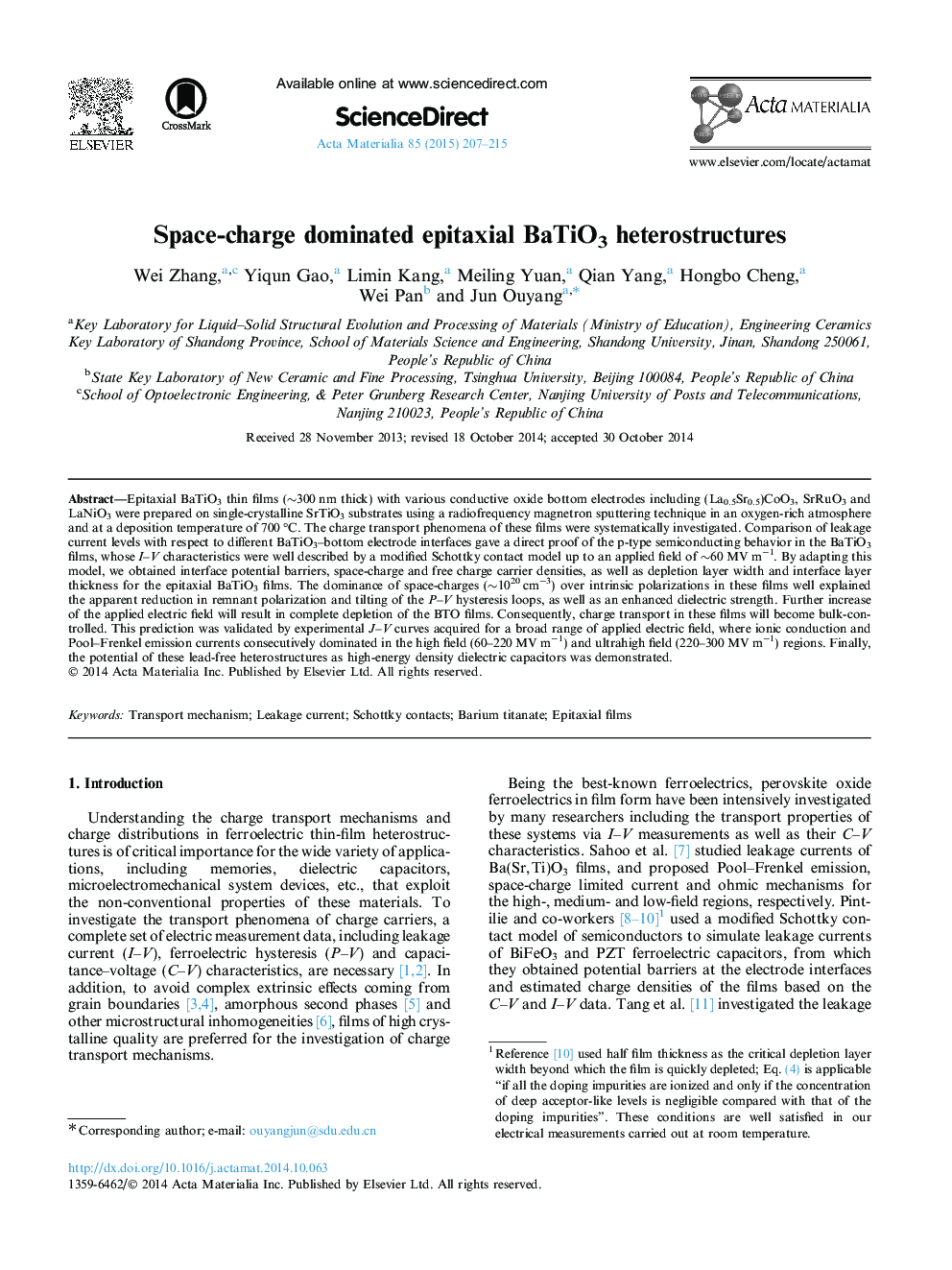| Article ID | Journal | Published Year | Pages | File Type |
|---|---|---|---|---|
| 7880805 | Acta Materialia | 2015 | 9 Pages |
Abstract
Epitaxial BaTiO3 thin films (â¼300 nm thick) with various conductive oxide bottom electrodes including (La0.5Sr0.5)CoO3, SrRuO3 and LaNiO3 were prepared on single-crystalline SrTiO3 substrates using a radiofrequency magnetron sputtering technique in an oxygen-rich atmosphere and at a deposition temperature of 700 °C. The charge transport phenomena of these films were systematically investigated. Comparison of leakage current levels with respect to different BaTiO3-bottom electrode interfaces gave a direct proof of the p-type semiconducting behavior in the BaTiO3 films, whose I-V characteristics were well described by a modified Schottky contact model up to an applied field of â¼60 MV mâ1. By adapting this model, we obtained interface potential barriers, space-charge and free charge carrier densities, as well as depletion layer width and interface layer thickness for the epitaxial BaTiO3 films. The dominance of space-charges (â¼1020 cmâ3) over intrinsic polarizations in these films well explained the apparent reduction in remnant polarization and tilting of the P-V hysteresis loops, as well as an enhanced dielectric strength. Further increase of the applied electric field will result in complete depletion of the BTO films. Consequently, charge transport in these films will become bulk-controlled. This prediction was validated by experimental J-V curves acquired for a broad range of applied electric field, where ionic conduction and Pool-Frenkel emission currents consecutively dominated in the high field (60-220 MV mâ1) and ultrahigh field (220-300 MV mâ1) regions. Finally, the potential of these lead-free heterostructures as high-energy density dielectric capacitors was demonstrated.
Related Topics
Physical Sciences and Engineering
Materials Science
Ceramics and Composites
Authors
Wei Zhang, Yiqun Gao, Limin Kang, Meiling Yuan, Qian Yang, Hongbo Cheng, Wei Pan, Jun Ouyang,
